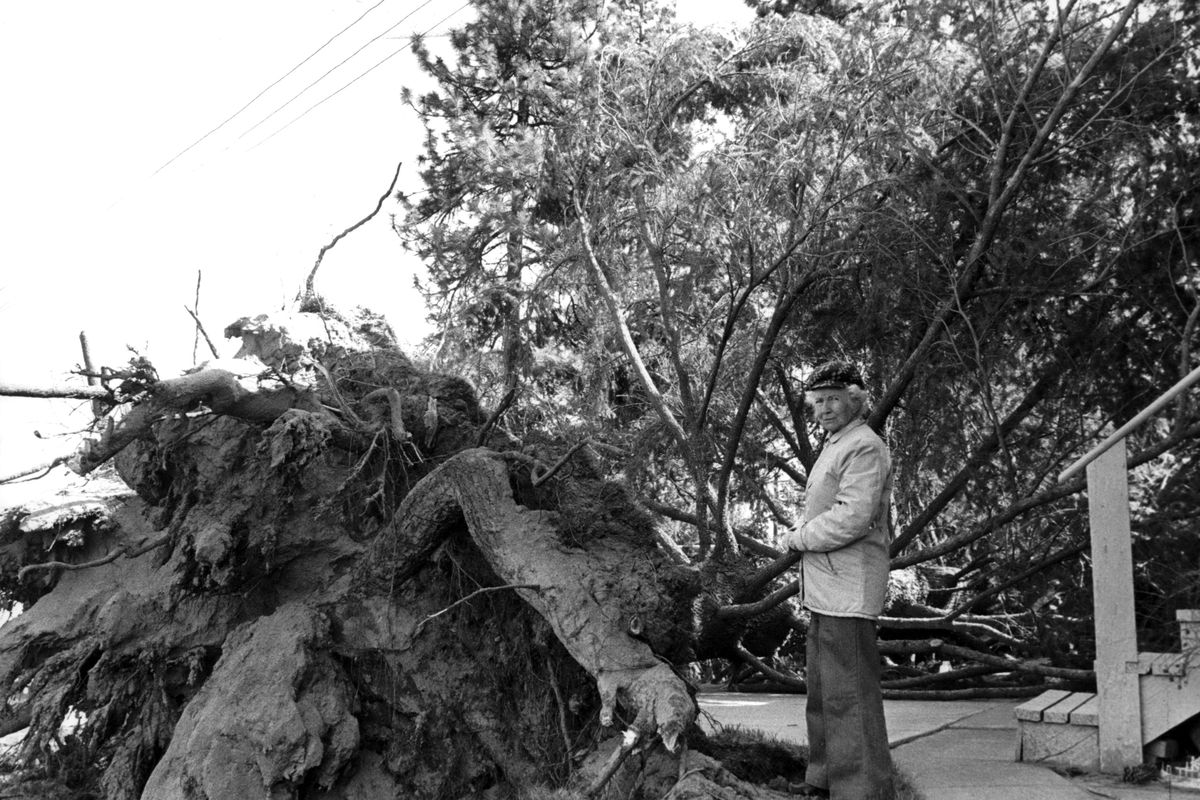Then & Now: Windstorms in Spokane

The devastating windstorm of Nov. 17 stands as the worst power outage in the history of Avista Utilities. But newspaper clippings show that windstorms have been a feature of our region’s weather long before the founding of Spokane.
In the late 1870s, Leroy S. Keeton’s family moved to the community of Buckeye, originally founded by transplants from Ohio, southwest of Spangle. He was 12 years old when the “big wind” hit in January 1880. Keeton said, “Our house had a door on the windward side and another on the opposite side. Father, Mother and I braced ourselves with all our strength to hold the door and then my eldest sister took my father’s place while he went out the other door and got a fence post which he braced against the door and that held it in place.” After the storm began to subside, a neighbor and his family of four were brought to the Keeton house because the roof blew off their cabin. They stayed two weeks until repairs could be made.
Two of Keeton’s uncles, David and Martin Keeton, were at the house that day and headed home on foot just before the wind started. “When it came, the two were knocked off their feet. They rolled down a bank into a draw, laid there flat until it was over. When Martin got to his cabin, he found that it had been blown some distance and that all the fences were demolished.”
Pioneer J.M. Nosler wrote in his diary, “Friday, January 9, 1880. Tonight we have a hurricane, went down to the cellar and when we came out nearly all the trees in sight were blown down. Two houses in town blown down and a great deal of timber in the country blown down.”
Mrs. W.C. Gray, who operated the California House hotel in downtown Spokan Falls, wrote, “On the night of the big wind a fierce gale from the Oregon coast swept through the country 20 miles wide extending clear into Idaho. We had to pile trunks against the doors of the hotel to keep them from being blown open.” A hotel guest said five men had to sit on a trunk against the door to hold it shut.
John T. Davis, who rode out the storm in a cabin 30 miles southwest of Spokane, said, “For years afterward, anyone going through the woods about the Spokane country would find nearly all of the large trees uprooted and lying pointing northeast, the direction in which the wind blew. The big wind was one of the noted events of early days.”
Spokane’s first weather reporting station opened a few months after the 1880 storm.
A 1933 Spokesman-Review story put a favorable spin on local weather by comparing cities across the nation for average wind speed and maximum gusts measured. “Spokane, with an average velocity of six miles an hour and maximum of 52 miles, has the best record of them all.”
Jesse Tinsley